Gas hob connection: safe connection instruction
The steps for installing separate gas equipment — a hob and an oven — are similar to installing a conventional gas stove, but they also have their own characteristics. Sometimes users only connect a gas hob, as they don’t use an oven or prefer an electric model.
If you decide to do the installation work yourself or want to monitor the work of specialists, we suggest that you take a closer look at how to connect the gas hob yourself.
The content of the article:
Stages of connecting a gas hob
The process of installing equipment takes no more than an hour, most of the time is spent on preparatory work and calling the wizard to obtain an opinion.
There are four stages:
Behind each stage there are many preparatory measures: the purchase of gas equipment and related materials, the coordination of the time for calling a specialist, the preparation of kitchen modules for the insertion of appliances. We will analyze each stage separately to prevent possible errors.
Stage 1 - preparation of equipment and tools
We recommend purchasing a hob in advance. If this is not possible, then you need to know the exact dimensions. Usually all 4-burner models comply with the standard 50 * 60 cm (+/- 2 cm), 3- and 2-burner models, respectively, are smaller in width.
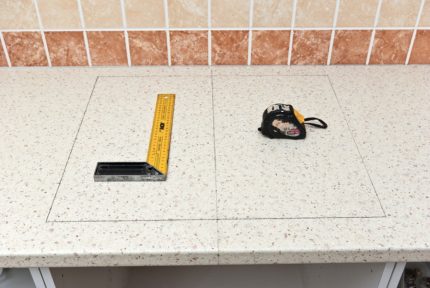
In addition to gas equipment, you will need to buy the following materials:
- dielectric insert;
- flexible gas hose (1 or 2);
- linen thread.
Fasteners for installation are usually supplied, so you do not need to buy them.
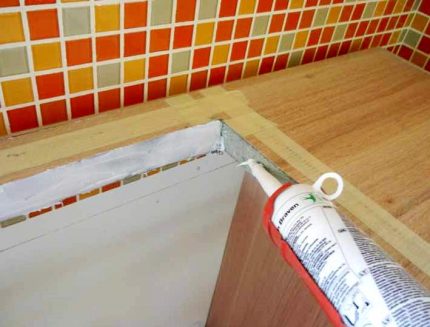
Of the tools, you need a standard set that every home master usually has: a pair of gas keys, a screwdriver, and pliers. If cutting a metal pipe is necessary, then this is the concern of the representatives of the service organization - it is impossible to independently perform any actions with gas supply pipes.
Stage 2 - cutting holes in the countertop
Knowing the exact dimensions of the hob, you can make a hole in the countertop in advance. Of course, the factory would handle it more professionally, because it is very important to cut a neat rectangle with right angles and even sides.
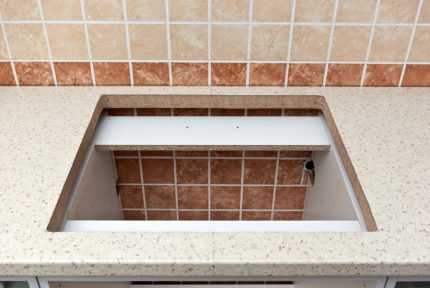
The help of furniture makers is useful when the countertop is not made of chipboard, MDF or wood, but of a more durable material - artificial stone.
If you decide to make a hole yourself, then use a light and productive tool - for example, a jigsaw.
Procedure:
- Refine the panel dimensions, examine the installation diagram.
- Mark the table top with the recommended indentation from the wall.
- Glue paper tape around the perimeter, and use a pencil or marker to draw the outline of the fragment you want to remove.
- Cut a hole with a jigsaw. At first it is recommended to make a close cut, then - against the wall, and the last - side.
- Remove the cut piece of countertop.
- If the panel is at hand, immediately try on it.
If the material of the countertop crumbles in the places of the cut, you can treat the edges with any glue composition, but first you need to sand and vacuum. Sanitary silicone is used for chipboard - it additionally protects the edges from moisture.

You can also use a thermal foil or reflector made of aluminum tape to prevent exposure to the tabletop of high temperature.
Stage 3 - connecting the panel to electricity
Modern hobs are equipped with an electric ignition function, therefore, you will need to install a power outlet.
Often, together with a gas hob, an electric oven is installed. To connect a device with a power of up to 3.5 kW, you will need:
- three-core cable vvg-p 2.5 mm;
- 16 A socket with grounding;
- if there is no connecting wire in the kit, then the PVC cable 3 * 2.5 mm and the plug.
For a more powerful oven, you need a 3.5 mm cable and a 40 A socket.
According to the standards, the height of the outlet installation is not higher than 90 cm, while it should not be on the same level with the hob.
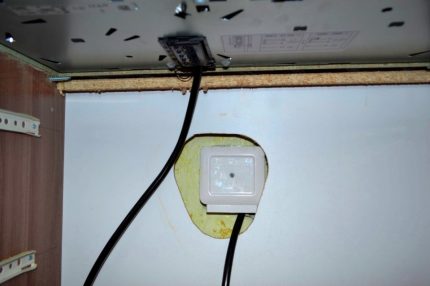
For protection in the switchboard, a separate RCD or a difavtomat is installed - separately on a line of gas cooking equipment.
The installation of the outlet takes place in the standard way: first, the mounting box is fixed in the wall, then the terminals are attached, and the decorative panel is fixed on top. More details on the installation of sockets for electric stoves can be found in this stuff.
Safety regulations:
- the manufacturer recommends using the services of a professional electrician;
- on the bottom side of the device there is a plate with technical specifications presented to the mains, from which it is impossible to deviate;
- the electric cable cannot be twisted, clamped, laid near sharp corners;
- after installation, it is necessary to isolate all conductive elements and provide protection against accidental contact.
Subsequent repairs should only be carried out with the appliance disconnected from the mains.
Stage 4 - connecting the panel to the gas line
For a correct connection of the hob to gas, a flexible adapter is required - a hose no longer than 2 m. Often, because of an inconvenient layout, longer hoses are also used, but this is prohibited by the rules of operation of gas equipment.
On sale you can find various gas liners with fabric, rubber and metal braid. Bellows hoses are becoming more and more popular, which are characterized by wear resistance and a longer service life.
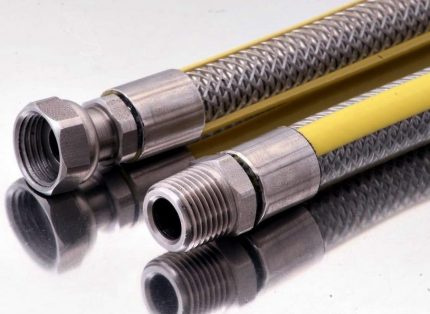
In addition to the hose, a dielectric insert is required. It is installed on the pipe in front of the shut-off valve.
The dielectric serves as a safety measure - it protects both equipment and users from stray currents.
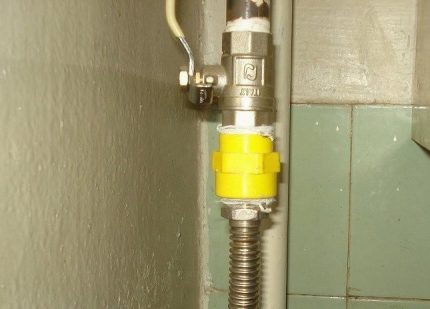
Suppose that the coupling is already installed, then we act in the following order:
- We connect the gas hose to the dielectric. If not, then to the metal pipe immediately after the tap. For adjoining density we use flax or fum tape.
- On the bottom side of the panel we find a small threaded pipe and wind the hose in the same way.
No further action is required.
If you want to connect the gas hob and oven at the same time, you should use two eyeliners. But keep in mind that connection through a tee is not welcomed by all representatives of Gorgaz! For example, MosGaz employees write a prescription and insist on a gas pipe routing.
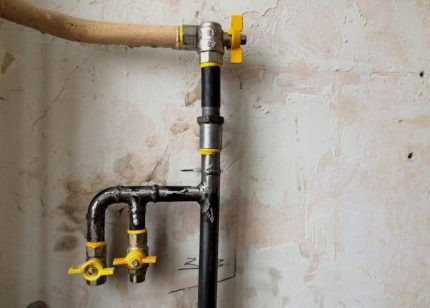
This connection method is considered more correct for two reasons:
- the number of threaded connections is reduced, due to which tightness and safety are increased;
- shut-off valves are installed on both branches - in the case of a tee, one common valve is saved.
We remind you that all actions, if you decide to connect on your own, need to be coordinated with the employees of Gorgaz or Oblgaz - and then there will not be unpredictable situations that result in expensive repairs.
Stage 5 - Leak Testing and Testing
You can check the tightness of threaded connections on your own. To do this, arm yourself with a brush and cover them with soapy water.
But the final conclusions will be made by the inspecting employee - he will also check the connection for leaks, and then draw up a conclusion, which will show the date of visit, brands and serial numbers of gas equipment, type of connection.
It is not recommended to start operation before the arrival of the gas service employee, in case of accidental leakage, all responsibility falls on the shoulders of the homeowner. But the main thing nevertheless is the safety of the near and dear ones, therefore it is not worth rushing and taking risks.
The nuances of connecting to a gas cylinder
If in cities and large villages residential houses and apartments are connected to natural gas, then in villages and summer cottages they are often used LPG cylinders. This is due to the fact that no gas pipeline was laid near the settlements.
Connection steps gas hob to the cylinder the same as with a normal connection to the pipe. The difference is that when using cylinders, the devices are modified to make the combustion process more efficient.
When connecting the cylinder, increased pressure is observed, due to which there is a lack of oxygen. As a result, a yellow flame unusual for gas burning and a large amount of soot. The problem can be solved by replacing nozzles designed for natural gas - methane, with analogues for LPG.
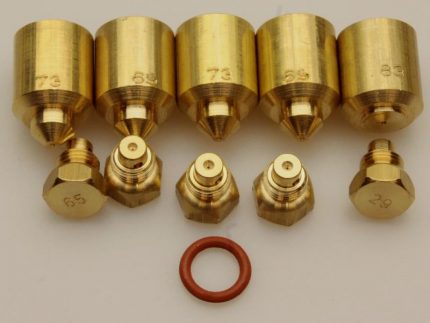
The process of replacing the nozzles is simple; instructions can be found in the installation manual for the device.
All work on the completion of equipment is carried out with the cylinder off - it is connected last.
What else do you need to remember when connecting the hob to the LPG?
When using several cylinders apply connecting ramp, which reduces the volatility of the fuel and reduces the risk of freezing it in the gearbox.
After installing all the elements, it is necessary to check the operation of the hob. First tested for leaks using a soap solution. Then unscrew the valve on the cylinder and adjust gearbox. If the flame is yellow or there is a lot of soot - it is necessary to lower the pressure by screwing the valve a little.
And finally, you should invite an Oblgaz employee to confirm and register the fact of connecting new equipment. In the future, the service will be carried out by the appropriate organization.
Conclusions and useful video on the topic
Preparation of the countertop and the nuances of mounting the hob:
Video tutorial and useful tips:
Rules for connecting to a gas pipe:
Whatever actions you take with gas equipment, they must meet installation requirements and safety regulations.
Before starting work, we recommend that you study the provisions of SNiP 42-01-2002, and then the manufacturer's instructions. Any deviations from the standards remove the equipment from the guarantee and threaten trouble with gas workers, the smallest of which is a fine.
Please tell our readers about your experience with connecting or replacing a gas hob. Leave your comments, upload photos, ask questions - the block for communication is located under the article.

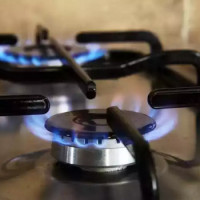 DIY gas stove connection: how to install a gas stove in an apartment step by step
DIY gas stove connection: how to install a gas stove in an apartment step by step 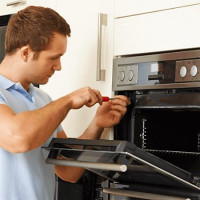 How to connect the built-in gas oven: a detailed briefing with useful tips
How to connect the built-in gas oven: a detailed briefing with useful tips 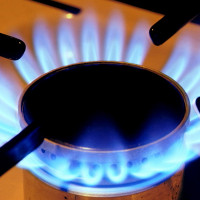 How is gas connected to a private house: input device + system installation
How is gas connected to a private house: input device + system installation 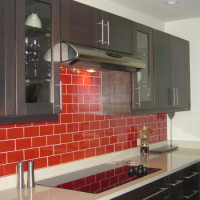 How to sheathe a gas stove: options and instructions for decorating the wall near the gas stove + security measures
How to sheathe a gas stove: options and instructions for decorating the wall near the gas stove + security measures 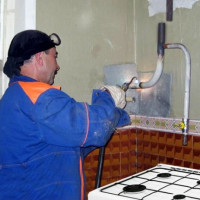 How to transfer a gas pipe in an apartment: transfer rules and location tips
How to transfer a gas pipe in an apartment: transfer rules and location tips 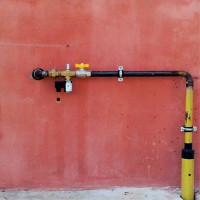 Laying a gas pipeline in a case through a wall: the specifics of a device for introducing a pipe for gas into a house
Laying a gas pipeline in a case through a wall: the specifics of a device for introducing a pipe for gas into a house  How much does it cost to connect gas to a private house: the price of organizing gas supply
How much does it cost to connect gas to a private house: the price of organizing gas supply  The best washing machines with dryer: model rating and customer tips
The best washing machines with dryer: model rating and customer tips  What is the color temperature of light and the nuances of choosing the temperature of the lamps to suit your needs
What is the color temperature of light and the nuances of choosing the temperature of the lamps to suit your needs  Replacement of a geyser in an apartment: replacement paperwork + basic norms and requirements
Replacement of a geyser in an apartment: replacement paperwork + basic norms and requirements